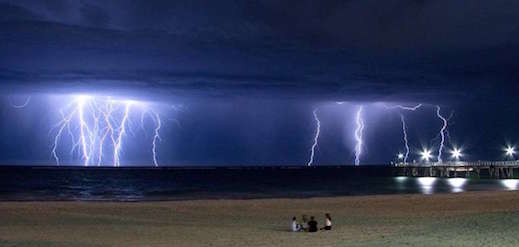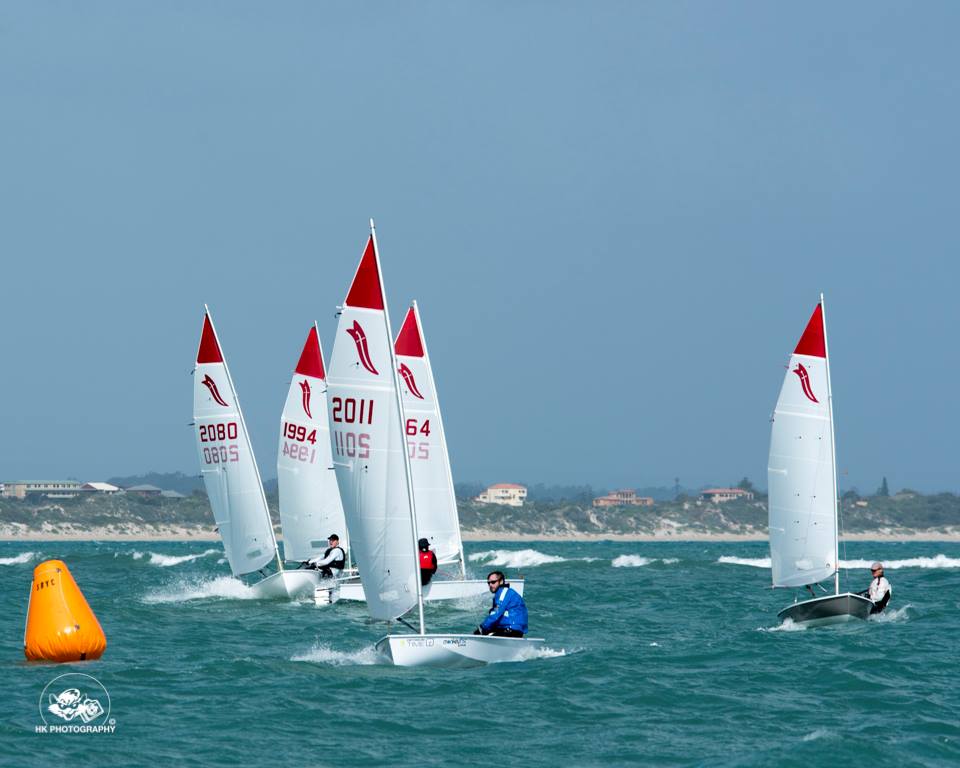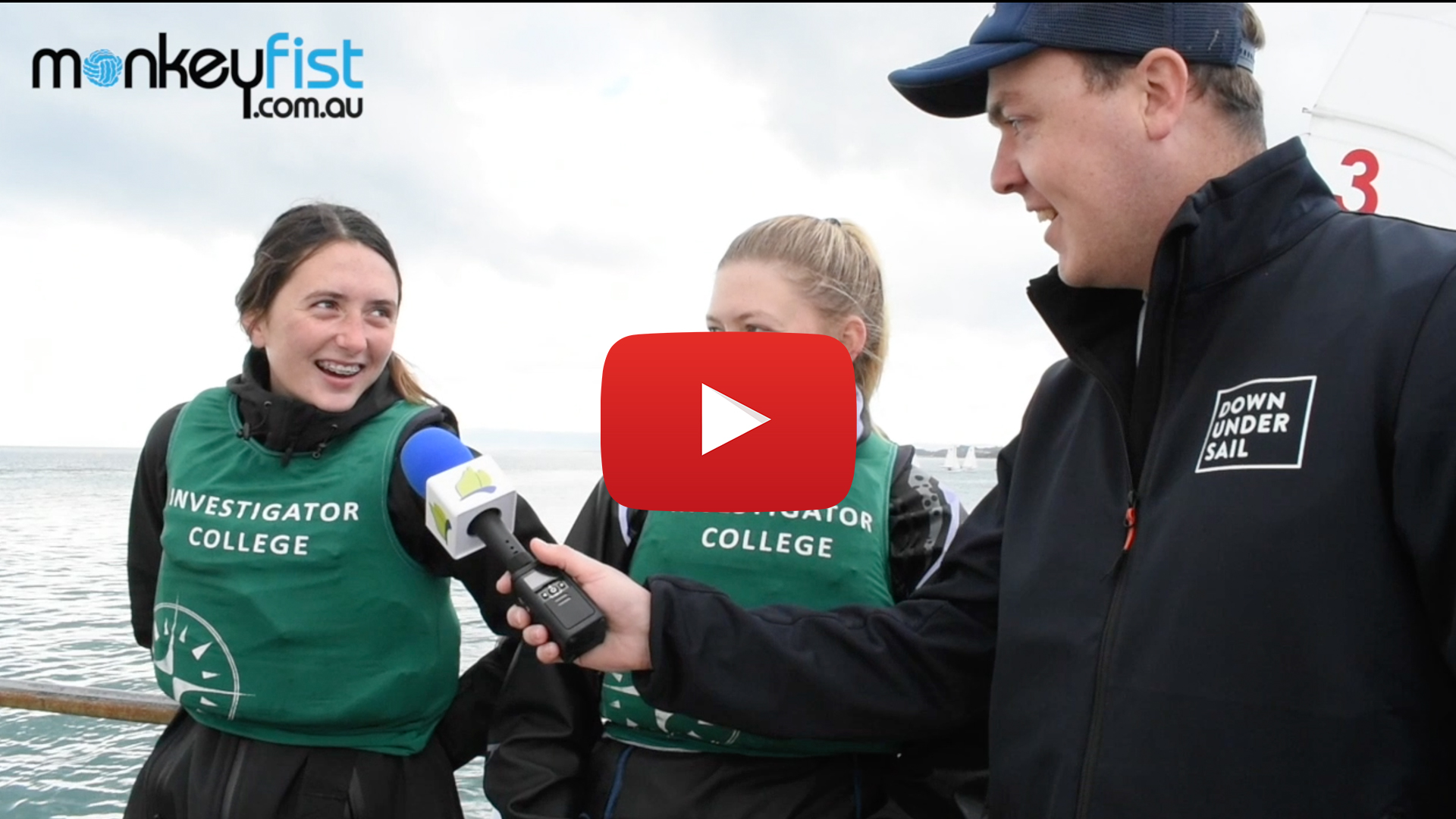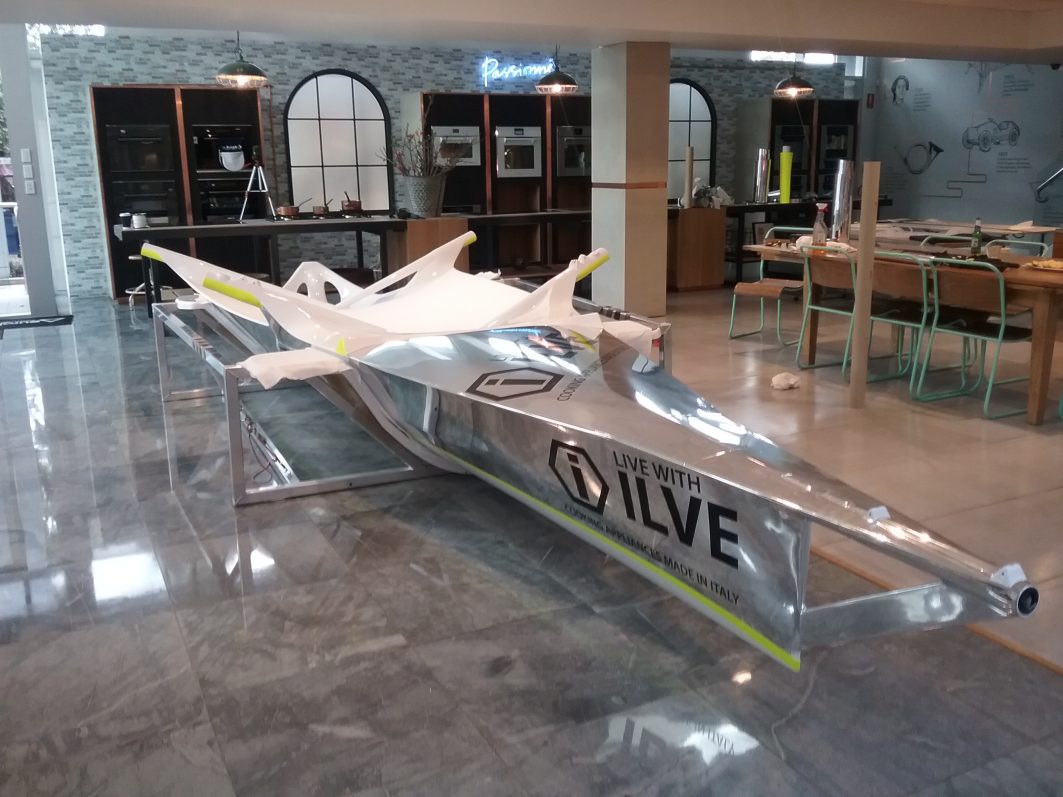By Brett Gage, Bureau of Meteorology
“Thunderbolt and lightning, very, very frightening”
Quoted from a well known song… one of the best for a karaoke team effort!
Lightning is most commonly produced by thunderstorms. However there are numerous forms of lightning, for the more scientifically inclined take a visit here.
What does this have to do with sailing you may ask? Well the spars on your boat conduct electricity and a boat with a mast increases the chance of getting struck by lightning. An interesting article on the probability factors can be found here.
Luckily in Adelaide, the number of thunderstorm days is a lot lower than those of Sydney, Brisbane or Darwin.
Overhead electricity wires, also pose a very dangerous threat. One of my primary school teachers lost his life whilst standing in a boat, holding the mast as it was driven under some wires in a car park at Goolwa. The mast came in contact with the overhead wires.
Always de-rig your boat in an area free from overhead wires before transporting.
Interesting facts:
Whilst the temperature of a lightning bolt can be up to 5 times hotter than the surface of the sun, you might only receive some minor burns due to the limited duration of the charge. The danger comes from damage to the nerves from electricity.
The speed of light is much faster than the speed of sound. You can estimate the distance of the thunderstorm/lightning by counting the time difference between seeing lightning and hearing thunder. The storm is about 1 km away for every 3 seconds.
Lightning strikes can occur intra-cloud, cloud to cloud or cloud to ground. Some are easily spotted associated with a distinct thunderstorm cell, others can occur more randomly out of thick middle level cloud.
How do we monitor for lightning?
Read the weather forecast. There is a weather section in all coastal waters forecasts. I highly encourage all sailors to visit the following websites to gain a good understanding of marine weather forecasts.
and in particular the links that are in the above site
www.bom.gov.au/marine/about/about-marine-services.shtml
www.bom.gov.au/marine/about/check-the-weather.shtml#vitalchecks
- Monitoring the local radar assists in tracking thunderstorm speed and direction, as well as growth and decay www.bom.gov.au/australia/radar/
- The display from weatherzone, includes lightning (the little crosses which are known as GPATS), although it is sometimes unavailable www.weatherzone.com.au/radar
- The raw feed from GPATS is at www.gpats.com.au/australian-real-time-feed
- Lastly our eyes and ears are useful tools. If you see a lightning strike near your club before heading out, that is not overly obvious to all, report it to either a Flag Officer, Principal Race Officer, Race Advisory Committee member or to the Sign On desk, describing its approximate location relative to the club.
If you are unfortunate enough to be caught out near lightning, encourage your crew to avoid contact with the spars, head for shore and take cover in a building or in a car.
Brett the Met





